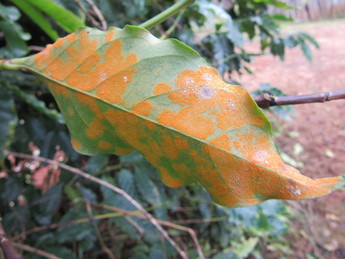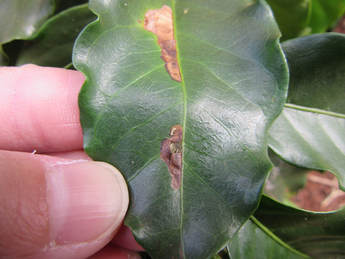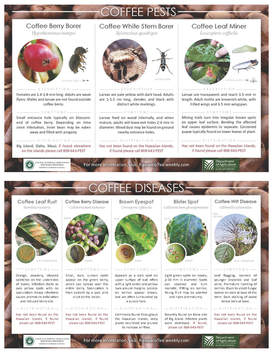|
|
|
Coffee Pests and Diseases
Not Known to Occur in Hawaii
Current pests and diseases not known to occur (NKO) in Hawaii
|
If suspected, what do I do?
- Contact and report your find immediately to the Hawaii Department of Agriculture by calling their toll-free pest hotline at 808-643-PEST (7378) or by contacting your nearest UH CTAHR Cooperative Extension office (also listed below). Listen carefully to their instructions. Their instructions may supersede any of the instructions below.
- Big Island - Kona - 808-322-4892; Hilo - 808-969-8201; Kamuela - 808-887-6183
- Maui - Kahului - 808-244-3242 x222
- Molokai - Hoolehua - 808-567-6929
- Oahu - Honolulu - 808-956-7290; Pearl City - 808-453-6050; Wahiawa - 808-622-4185
- Kauai - Lihue - 808-274-3471
- For Insect Pests:
- If possible and if can be done safely, capture the insect (immature or adult) in a jar or container that prevents escape.
- Freeze the insect immediately. Do not smash or damage as identification will be difficult to impossible.
- Collect samples of damaged plant parts caused or thought to be caused by this pest.
- For leaves and branches - Refrigerate, but DO NOT FREEZE. Be sure that the pest (assume it is present) cannot escape the container or bag that the leaves are kept in. Double bag or containerize if necessary.
- Take clear photos and/or video of the insect and damage whether capture is possible or not, and provide them to HDOA and the Cooperative Extension agent.
- Flag or visibly mark the area where the pest was found and communicate the find with all farm employees and administrators.
- Keep people and pets away from the area and DO NOT allow movement of soil, plant materials or supplies from the location that the pest was found.
- Provide HDOA and the Cooperative Extension agent with information such as your name and contact, the exact location and address of find, and type of host material where found. Personal information will not be shared with the general public.
- For Diseases:
- DO NOT touch the diseased plant parts and DO NOT collect samples of this fungal pathogen or damaged plant parts to prevent potential spread.
- If possible to do without touching the diseased plant parts, take clear photos and/or video and provide them to HDOA and the Cooperative Extension agent.
- Flag or visibly mark the area where the pest was found and communicate the find with all farm employees and administrators.
- Keep people and pets away from the area and DO NOT allow movement of soil, plant materials or supplies from the location that the disease was found.
- If you have touched or contaminated your clothing, footwear, hat, etc. with the fungal pathogen or think you may have, shower immediately with soap and water and wash your clothing, footwear, hat, etc. in laundry detergent and dry with high heat. Once decontaminated, then travel from your farm or location.
- Provide HDOA and the Cooperative Extension agent with information such as your name and contact, the exact location and address of find, and type of host material where found. Personal information will not be shared with the general public.
Preventing new pest and disease introductions to Hawai
Comply with all HDOA and USDA quarantine regulations. Quarantine restrictions have been placed on unroasted coffee, coffee seeds, plants and other propagative materials, used coffee materials and supplies, etc.
Contact website management if you require any assistance with the site or information provided.


